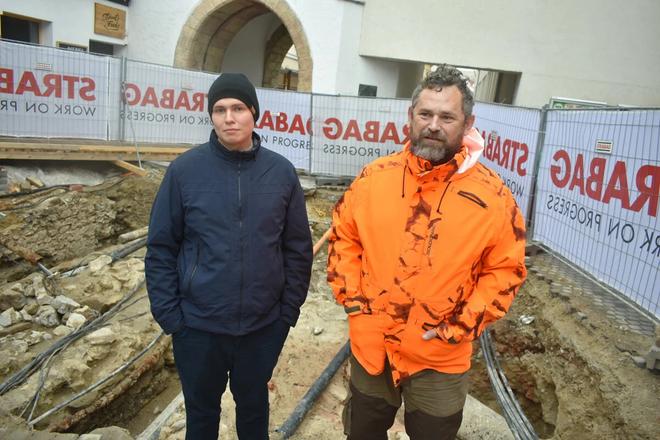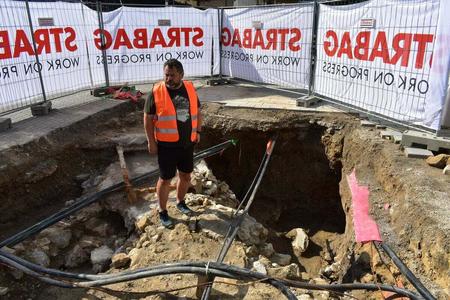Archaeologists in Trenčín have uncovered the remains of a mediaeval barbican, long suspected to have been hidden beneath Sládkovičova Street.
The discovery, made during a revitalisation project of the city’s pedestrian zone, also revealed a network of underground passages that once served as a sewage system in the Middle Ages, reports My Trenčín.
The remnants of the city’s mediaeval castle system, which shed a new light on its defensive structures, are well-preserved.
“With archaeology and written records, we can now recreate the entire floor plan of the barbican and pre-castle fortifications in Trenčín,” said Drahoslav Hulínek, head of the excavation on Sládkovičova Street. The barbican, a key defensive feature, stretched from the start of Sládkovičova Street, where a tower and moat once stood. “A bridge spanned the moat, leading to an entrance portal. The walls extended on either side towards the gate, which featured another tower-like structure—its remains are visible on the floor plan,” Hulínek explained.
King Sigismund of Luxembourg
The structure ranks among the most significant pre-castle fortifications in the former Kingdom of Hungary, highlighting Trenčín’s strategic importance in mediaeval times.
The barbican is linked to King Sigismund of Luxembourg, a staunch Catholic, who ruled during the Hussite raids - a series of military campaigns and conflicts during the early 15th century in Central Europe named after Jan Hus, a Czech reformer who challenged the Catholic Church.
“This is one of the most fascinating barbicans ever,” said archaeologist Hulínek. “It was likely built primarily as a defence against Hussite raids from the Czech lands. Trenčín was a favourite city of King Sigismund, who often stayed at Trenčín Castle.”
The excavation revealed more than just the barbican’s walls. A network of underground tunnels and corridors, primarily serving as a mediaeval sewer system, was also uncovered.
“We discovered significant amounts of late mediaeval ceramics and glass spanning from the Middle Ages to the modern period,” Hulínek added. “There were also remnants of houses dating from the 15th to 19th centuries within the barbican area.”
Surprised by well-preserved mediaeval finds
While the main phase of the research has concluded, the archaeologists will now collaborate with historical architects to map out the site’s floor plan, using the masonry and layers uncovered during the dig.
Further monitoring will take place during construction work on the site to safeguard any additional discoveries. “The backfilling process itself will be complex, requiring the careful layering of geotextiles and loose materials to protect the find,” Hulínek said.
The team expected to uncover remains from Roman times, the Middle Ages, and the modern era. “What we found mainly reflects the Middle Ages and modern period,” said the archaeologist Alexej Skutin. “We were pleasantly surprised by the quality of the mediaeval finds.”
The site, once a bustling street lined with houses even into the 1970s, has now offered a rare glimpse into Trenčín’s layered history.




